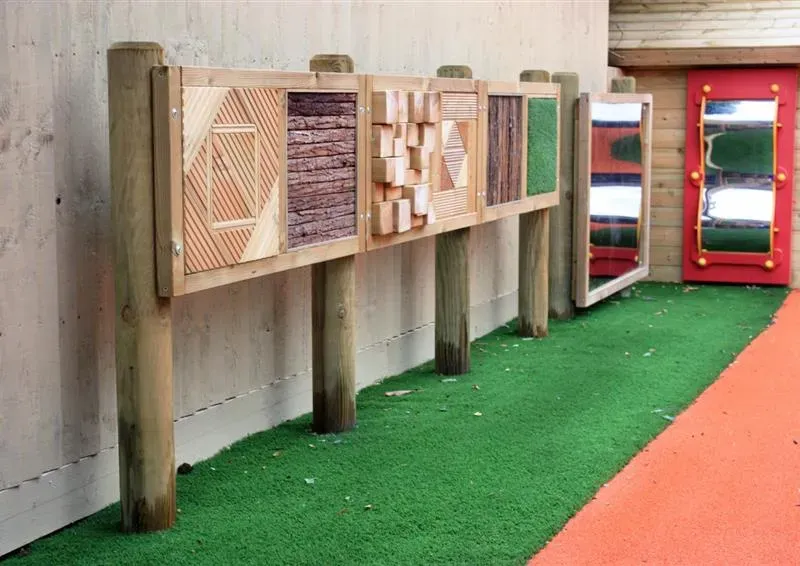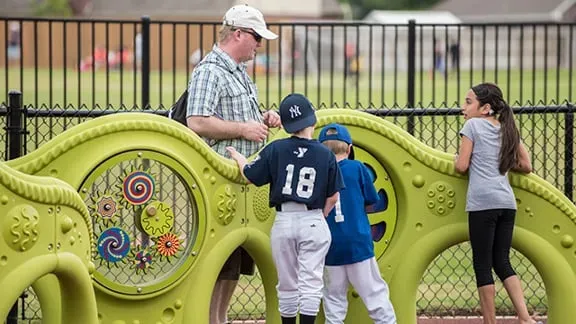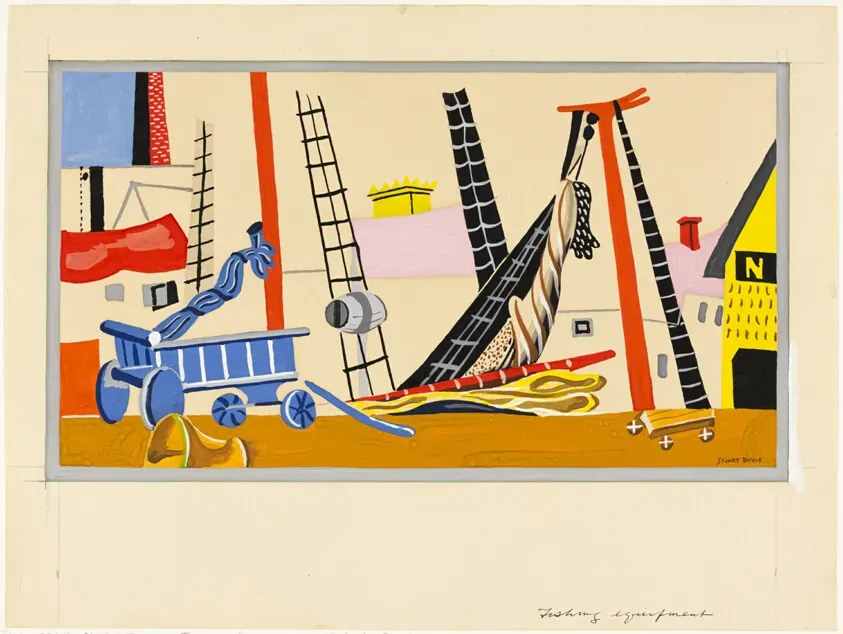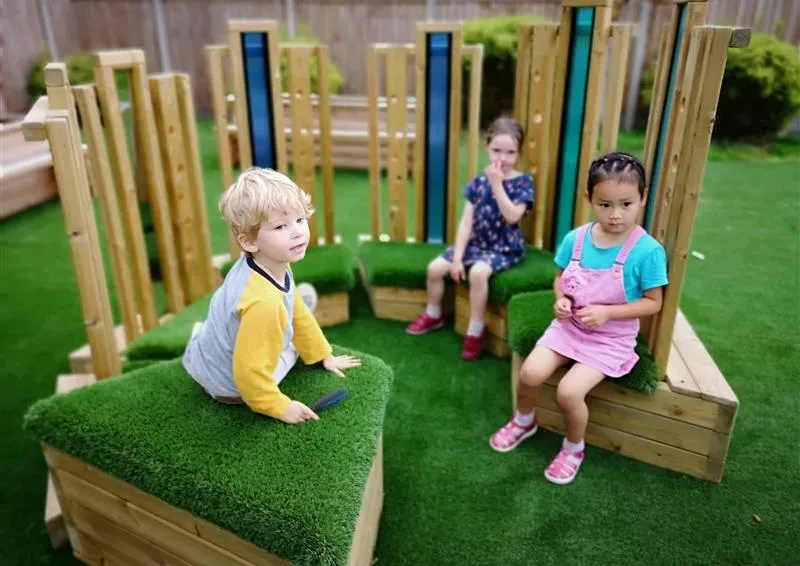Table of Contents
Watch kids on a typical playground today. You might see them running, climbing, maybe swinging. All good stuff, sure. But are they really *engaging*? Or just burning off energy? There's a difference. We often think of play as just physical activity, but it's so much more complex, especially when it comes to development. That's where the right tools come in. We're talking about outdoor sensory playground equipment, the kind of stuff that doesn't just occupy kids, but actually helps wire their brains and bodies for the world. Forget the basic slide and swing set; modern play is about stimulating all the senses, creating rich experiences that build everything from fine motor skills to emotional regulation. This isn't some touchy-feely trend; it's backed by how kids learn and grow. Get ready to look at playgrounds differently, because we're diving into what makes outdoor sensory playground equipment a genuinely smart investment in childhood development.
Understanding Sensory Play in the Great Outdoors

Understanding Sensory Play in the Great Outdoors
It's More Than Just Running Around
let's talk about understanding sensory play in the great outdoors. It's not just about letting kids loose to get muddy, though that's certainly part of it. Sensory play is about intentionally engaging a child's senses – all of them, not just the usual five we learned in school. Think about the feel of rough bark, the smell of wet earth after rain, the sound of leaves crunching underfoot, the sight of dappled sunlight through trees, the taste (maybe not encouraged, but sometimes inevitable) of a raindrop or a safe berry. When kids are outside, they are bombarded with sensory information, and processing that is crucial for their development. It helps them understand their environment, their own bodies, and how to interact with the world around them. It builds neural pathways like crazy.
Why "Great Outdoors" Matters for Senses
Bringing this sensory engagement specifically to the outdoors amplifies its power. Unlike a controlled indoor environment, the great outdoors offers unpredictable, ever-changing stimuli. The wind shifts, the light changes, new bugs appear, temperatures fluctuate. This variability forces the brain to constantly adapt and integrate information in complex ways. Understanding sensory play in the great outdoors means recognizing this dynamic element. It’s not just about isolated sensory stations, though those are great; it's about the entire environment contributing to a rich, multi-sensory experience that indoor play, no matter how well-designed, struggles to replicate. Kids learn to navigate different textures underfoot, gauge distances by sight and sound, and regulate their bodies in response to natural forces. It's foundational stuff.
So, what senses are we really talking about beyond the standard five?
- Auditory: Birdsong, wind chimes, leaves rustling, water sounds.
- Tactile: Sand, water, mud, different plant textures, smooth stones, rough wood.
- Visual: Colors of flowers and leaves, patterns of light and shadow, moving clouds, insects.
- Olfactory (Smell): Flowers, pine needles, damp earth, cut grass.
- Gustatory (Taste): (Less common/safe in a playground, but relates to exploring the world).
- Vestibular: Swinging, spinning, sliding – relates to balance and spatial orientation.
- Proprioceptive: Climbing, lifting, pushing, pulling – relates to body awareness and force.
- Nature Play: The unique blend of all senses interacting within a natural or nature-inspired setting.
Exploring the Six Senses with Outdoor Sensory Playground Equipment

Exploring the Six Senses with Outdoor Sensory Playground Equipment
Alright, so we’ve established that sensory play isn’t just some academic concept; it’s how kids process the world. Now let’s get down to the nuts and bolts: how does specific outdoor sensory playground equipment actually make this happen? It’s about creating deliberate opportunities for kids to engage those senses we just listed, beyond just what nature offers on its own. Think of it as curating the environment. You can have equipment that screams "touch me!" with varied textures, or pieces designed purely for making noise. It's about providing the tools that invite exploration and interaction on a sensory level, making sure every kid, regardless of their sensory processing style, finds something that clicks and helps them integrate those crucial inputs.
Specific Types of Outdoor Sensory Playground Equipment

Specific Types of Outdoor Sensory Playground Equipment
Making Some Noise (Auditory Equipment)
so kids love making noise. Anyone who's spent more than five minutes with a toddler knows this fundamental truth. Instead of constantly telling them to quiet down, why not give them sanctioned ways to explore sound? That's where auditory outdoor sensory playground equipment comes in. We're talking chimes, drums, xylophones, rain wheels – anything that lets them create their own symphony (or glorious racket). This isn't just about noise for noise's sake. It helps them understand cause and effect, rhythm, pitch, and volume. Plus, for some kids, the repetitive action of hitting a drum or spinning a chime is incredibly regulating. It’s a chance to be loud and proud, not loud and told to stop.
Feel This! (Tactile Equipment)
Remember how fascinating mud pies were? Or running your hands through sand? Tactile experiences are massive for little brains. Outdoor sensory playground equipment focused on touch gives kids deliberate ways to explore different textures. Sand and water tables are classics for a reason – they offer endless possibilities for scooping, pouring, and feeling. But you can also find panels with various textures – smooth metal, rough wood, bumpy rubber, bristly brushes. Some playgrounds incorporate natural elements like river stones or textured plants (safe ones, obviously). This helps kids process different sensations, which is vital for everything from fine motor skills to understanding their own body boundaries. It’s a hands-on, sometimes messy, way to learn.
- Auditory: Outdoor musical instruments (drums, chimes, xylophones), sound walls, rain wheels.
- Tactile: Sand and water tables, textured panels, sensory paths with varied ground materials, digging areas.
- Visual: Colored panels, spinning elements, reflective surfaces, magnifying glasses built into stations, nature observation areas.
- Vestibular: Swings (various types), spinners, slides, balance beams, climbing structures.
- Proprioceptive: Climbing walls, heavy balls, tunnels, monkey bars, pushing/pulling stations.
- Nature Play: Log steps, natural digging pits, planting areas, sensory gardens.
Seeing is Learning (Visual Equipment)
Visual stimulation on a playground goes beyond just bright colors, though those are important too. Outdoor sensory playground equipment can include elements specifically designed to engage the eyes in different ways. Think about panels with mazes or tracking games that help with eye-brain coordination. There are spinning elements that create mesmerizing patterns, reflective surfaces that distort images in fun ways, or even built-in magnifying glasses for examining leaves or bugs up close. This equipment helps kids focus, track movement, and understand visual relationships. It turns looking into an active process of discovery, proving that sometimes, the simplest visual prompts can unlock big learning moments.
The Real Benefits of Outdoor Sensory Play

The Real Benefits of Outdoor Sensory Play
Building Better Brains and Bodies
So, why bother with all this specialized outdoor sensory playground equipment? Is it just flashy stuff to look pretty? Absolutely not. The real magic happens internally. When kids are engaging with varied textures, sounds, and movements, they're not just having fun; they're building crucial neurological connections. This kind of multi-sensory input is foundational for cognitive development, helping kids process information more efficiently. Think about how a child uses proprioceptive equipment like a climbing wall: they're not just strengthening muscles, they're learning exactly where their body is in space, a skill vital for everything from writing to complex sports. Engaging with outdoor sensory playground equipment helps refine motor skills, improve balance and coordination, and even supports language development by giving them more things to talk about and describe. It’s like giving their brain a full-body workout.
More Than Just Physical Perks
Beyond the physical and cognitive gains, outdoor sensory playground equipment offers significant emotional and social benefits. For kids who might be overwhelmed by traditional, chaotic playgrounds, a dedicated sensory area provides a calmer space to regulate. The repetitive motion of a swing (vestibular input) or the focused activity at a tactile table can be incredibly grounding for anxious or overstimulated children. These spaces also naturally encourage different types of interaction. Kids might collaborate on a sandcastle, take turns at a musical instrument, or simply coexist peacefully in a shared space, fostering social skills without the pressure of competitive games. Plus, mastering a new piece of equipment, whether it's navigating a wobbly balance beam or creating a cool sound sequence, builds confidence and resilience. It’s play with a purpose, impacting their well-being on multiple levels.
- Improved fine and gross motor skills
- Enhanced cognitive processing and problem-solving
- Better balance, coordination, and spatial awareness
- Increased self-regulation and emotional calm
- Boosted confidence and independence
- Greater inclusivity for diverse play styles
Choosing and Installing Outdoor Sensory Playground Equipment

Choosing and Installing Outdoor Sensory Playground Equipment
Picking the Right Pieces (Without Going Broke)
so you're sold on the idea of outdoor sensory playground equipment. Great! Now comes the slightly less glamorous part: actually deciding what to buy and making it happen without needing a second mortgage. First, look at your space. Seriously measure it. A giant sand and water table sounds amazing until you realize it eats up half your available area. Think about the age range of the kids who will use it most. Toddlers need different sensory experiences than ten-year-olds. And be realistic about your budget. You don't need every single piece of equipment out there. Start small, maybe with a few key items that offer varied sensory input – say, a set of outdoor chimes and a textured path. Prioritize pieces that offer multiple sensory benefits or can be used in different ways. Nobody needs five different types of swings if you're just starting out.
Getting It In the Ground (Safely)
Once you've navigated the thrilling world of procurement, you have to get the outdoor sensory playground equipment installed. This isn't just about digging a hole and dropping something in. Safety surfacing is non-negotiable. Pea gravel, wood chips, rubber mulch, or poured-in-place rubber – pick something appropriate for the fall height of the equipment and your budget. Read the installation instructions carefully, or better yet, hire someone who knows what they're doing. Improperly installed equipment is a liability waiting to happen. Think about placement too; put noisy equipment away from quiet zones, and ensure good sight lines for supervision. And remember, this isn't a one-and-done deal. This equipment lives outside. It will need regular checks and maintenance to stay safe and functional.
- Assess available space and budget realistically.
- Consider the primary age group using the equipment.
- Prioritize pieces offering multiple sensory experiences.
- Research required safety surfacing for chosen equipment.
- Plan layout for safety, supervision, and sensory zoning.
- Factor in ongoing maintenance needs and costs.
Making Play Truly Count
So, we've covered the ground: outdoor sensory playground equipment isn't just an add-on; it's fundamental to creating play spaces that actually work for kids. It moves beyond the basic bounce-and-run model to engage the senses, fostering development in ways that traditional playgrounds often miss. Investing in these elements means building places where all kids, regardless of their individual needs or play styles, can find their footing, explore, and grow. It’s about recognizing that play isn't trivial; it's the serious business of childhood, and giving kids the right tools makes all the difference. Don't settle for just *a* playground; build one that truly serves the complex, wonderful, and sometimes messy process of growing up.